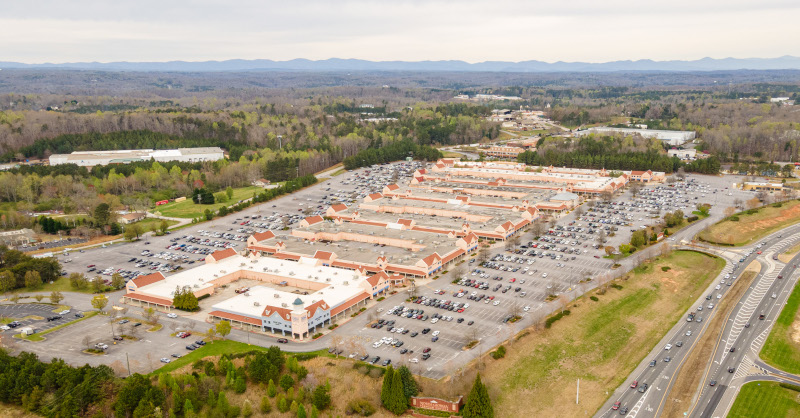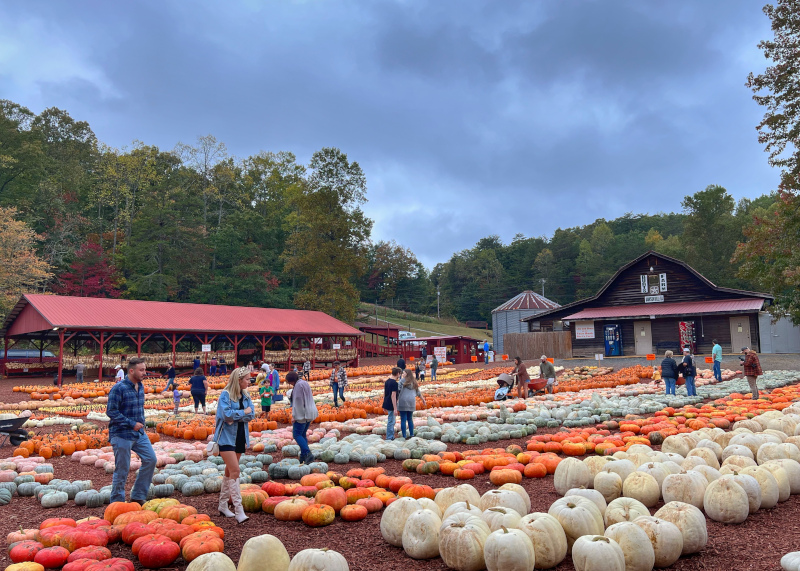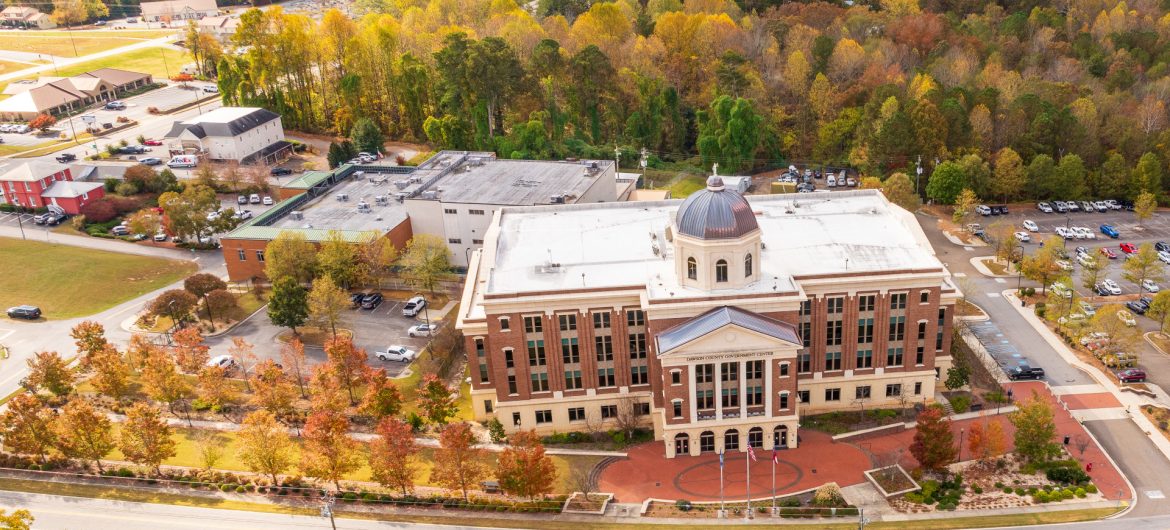Dawson County
Expertly Balancing Growth and Heritage
Blending rural charm with modern amenities, guided by strategic planning and community engagement.
Dawson County, Georgia, located approximately 40 miles from downtown Atlanta, has grown substantially over the past decade. This county, renowned for its unique blend of natural beauty and modern amenities, is rapidly becoming a desirable place to live and work. Joey Leverette, the county manager, highlights several key aspects that set Dawson County apart from its neighbors.
“Dawson County has experienced quite a bit of growth over the past decade,” Leverette begins. “We’re first or second in the state of Georgia per capita in growth, population-wise.” This surge in population, driven by the county’s appealing characteristics, has significantly influenced its trajectory in recent years.
Leverette emphasizes the county’s scenic appeal: “We’re kind of on the foothills of the mountains, with beautiful farmland and mountainous scenic areas.” This picturesque environment and a cooler climate attract a steady stream of visitors and new residents—additionally, a portion of Dawson County borders Lake Lanier, a central recreational hub for metro Atlanta.
Agritourism also plays a crucial role in the county’s economy. “In the fall, people come here and buy apples and pumpkins and visit our state park,” Leverette notes. Amicalola Falls State Park, the starting point of the Appalachian Trail, is a significant draw. “That park has just been upgraded and improved,” he says, mentioning the park’s unique lodging option, the Len Foote Hike Inn. “You must hike about five miles to get to the Hike Inn. It’s extremely popular year-round.”
Community Identity and Cultural Heritage
Dawson County boasts a rich character and heritage, balancing its rural roots with suburban conveniences. Dawson County Board of Commissioners Chairman, Billy Thurmond reflects on the diverse lifestyles the county offers. “In Dawson County, we offer people basically whatever they’re looking for,” he states. With over half the county remaining largely rural, the western and northwestern portions preserve a rustic charm, while the bustling 400 corridor caters to suburban preferences.
The county’s suburban areas provide an array of dining and retail options. He notes, “We have about anything you would want in reference to a restaurant or retail shopping.” Over the years, Dawson County has also seen growth in light industrial sectors and medical services, enhancing the quality of life for its residents. “We’ve grown in medical services to provide for our citizens,” he adds, highlighting the county’s adaptive nature to meet diverse needs.
Dawson County’s identity is deeply intertwined with its historical roots in moonshine and racing. “The heritage of Dawson County is moonshine and racing,” Thurmond says. These two elements of local culture are intricately linked, with moonshine running leading to the rise of racing in the area. “People running moonshine to Atlanta brought us into the racing scene,” he explains. The Georgia Racing Hall of Fame is an ode to this unique heritage, celebrating the county’s colorful past.

Expanding Economic Horizons
Despite its rural charm, Dawson County is actively enhancing its economic landscape. Though not officially designated as Main Street U.S.A., the historic downtown area of Dawsonville is a focal point for development. Kevin Herrit, Director of Economic Development, outlines the ongoing projects aimed at revitalizing this area.
“We have a historic downtown with its own district,” he says. “The city recently purchased 17-plus acres adjacent to the current downtown area.” This acquisition is part of a broader master plan to integrate the new land with existing civic amenities, such as City Hall and a large downtown park. Herrit notes, “They’re working to expand things and create different opportunities that don’t currently exist in the historic district.”
Dawson County’s commercial and industrial activities are concentrated outside the downtown area along the 400 corridor. Herrit explains, “In our comprehensive plan, we’ve designated a section of our county to remain agricultural.” This strategy prevents infrastructure development in certain areas, preserving the county’s rural essence while steering growth towards designated commercial zones.
Tourism remains a significant economic driver, but the county is diversifying its industrial base. The Blue Ridge Connector is a pivotal development in this direction, an intermodal facility by the Georgia Port Authority in Gainesville. The new facility offers Dawson County a competitive edge, potentially attracting new industries and bolstering existing ones. Herrit points to a recent success with BTD, a custom metal fabrication manufacturer. “They’re doing a 163,000 square foot expansion, a $32 million investment,” he says.
Infrastructure and Housing: Building for the Future
Dawson County’s rapid growth necessitates significant infrastructure improvements to support its expanding population and economic ambitions. County Manager Leverette discusses recent and upcoming projects critical to the county’s development strategy.
“The county has been very fortunate,” he remarks, referring to the recent Transportation Special Purpose Local Option Sales Tax, or T-SPLOST. “It’s a five-year funding mechanism that will generate about $68 million dedicated to roadway improvements.” This initiative includes a range of projects, from road paving and expansion to intersection and sidewalk enhancements. Leverette emphasizes, “This funding is a game changer for us, supporting both the community and economic development by ensuring viable roads for workers and suppliers alike.”
Water and sewer services, managed by a separate authority, are also strategically concentrated along one corridor of the county. Leverette explains, “They work very closely with economic development to coordinate where we can place commercial and light industrial growth.” Broadband infrastructure is another area seeing expansion. “The state of Georgia has allocated substantial funding for rural internet initiatives, improving access in our mountainous areas,” Leverette notes.
Addressing the nationwide housing shortage, Commission Chairman Thurmond provides insight into Dawson County’s residential development efforts. “We have a wide variety of housing needs and affordability issues,” he acknowledges. The county offers diverse housing options, from $200,000 starter homes to properties exceeding $1 million. Recent developments include workforce housing and federally subsidized housing for lower-income residents.
Educational Opportunities and Community Engagement
Dawson County strongly emphasizes education and workforce development, recognizing their crucial role in the community’s growth and sustainability. Leverette illuminates the educational resources and initiatives available to residents.
“Next door to us is the University of North Georgia in Dahlonega,” he says, emphasizing its proximity and influence. The university, experiencing significant growth, recently expanded its nursing program to meet the high demand in the medical field.
On the local level, Dawson County boasts an excellent school system. “We have one county school system with excellent graduation rates and student-teacher ratios,” Leverette notes. These attributes make the county attractive to families seeking quality education for their children. Additionally, Lanier Technical College has a campus in Dawsonville, offering specialized programs in trades like welding.
Dawson County’s strategic location near Atlanta further enhances its educational opportunities. Leverettet explains, “You can attend any school you want to attend in metro Atlanta, from becoming a doctor to an engineer.” This accessibility ensures residents can pursue diverse educational paths without significant geographical constraints.
Proximity to Atlanta and Commuting Patterns
The county’s location offers a blend of small-town charm with easy access to metropolitan amenities. Many residents commute to Atlanta, benefiting from the area’s economic opportunities while enjoying Dawson County’s more relaxed lifestyle. “Traffic is going one way in the morning and one way in the afternoon,” Leverette observes, indicating a well-defined commuter flow.
At the same time, community engagement is a cornerstone of Dawson County’s governance. Leverette emphasizes the importance of interacting with citizens and maintaining transparency. “We have a long-range planning committee of citizens to help us work through issues and provide recommendations,” he says, highlighting how the committee plays a vital role in shaping the county’s policies and initiatives.
Thurmond expands on the county’s community involvement. “We have 16 boards and committees that are citizen-based, providing input on various issues,” he states. All meetings are public and streamed live to ensure accessibility. He highlights the inclusive approach taken during the comprehensive planning process: “We had several community meetings to get people’s input. It’s their county, and we want them to provide us with what they would like it to be.”
Medical Services and Technological Innovation
Dawson County’s proximity to Atlanta, a major medical hub, complements its growing local medical services community. Leverette acknowledges the convenience this brings residents, stating, “We don’t have a hospital in Dawson County, but we are very close to three hospitals.” He points out that while some specialist services might require a short trip to the next county, the overall accessibility is excellent. “Northeast Georgia, including Dawson County, is a great place to get sick,” he quips, citing the Ronnie Green Heart Center in Gainesville and Emory University as top-tier facilities within reach. Leverette adds, “Northside Atlanta, a leading private hospital, also supports us.”
Herrit echoes Leverette’s sentiments, highlighting the economic growth tied to medical specialties. “Our specialties are a thriving part of our economic growth. We’re seeing more specialties coming from Northeast Georgia Health Systems and Northside Forsyth along the 400 corridor,” he notes. This trend is expected to continue, further embedding high-quality medical care within the county’s framework.
Dawson County is also making strides in technology and innovation, particularly in sustainability and green initiatives. Herrit elaborates on the county’s approach to incentivizing businesses that adopt green practices. “When companies offer ideas like LEED construction or in-house solar, we usually incorporate that into our incentive packages,” he says.
The county is actively enhancing its infrastructure to support electric vehicles (EVs). “We’ve had several energy-start charging stations come up both in Dawsonville and along the 400 corridor,” Herrit explains. He emphasizes the importance of making these stations accessible via mapping systems. Tesla has a mapping system, but there’s a push to create one that shows all charging stations, so any EV user can find them.”
Herrit details the range of charging options, from phase one to superchargers. “In some areas of North Georgia, we even have phase three superchargers that can charge a vehicle to 80% in just 20 minutes,” he says. This robust infrastructure supports residents and attracts eco-conscious visitors to Dawson County and the northeast Georgia region.”

Strategic Priorities for the Future
As Dawson County looks to the future, strategic planning and controlled growth remain at the forefront of its agenda. County Manager Leverette outlines the top priorities for the next 18 months.
“Maintaining the feel of Dawson County is our first priority,” Leverette asserts. Residents cherish the county’s natural beauty and rural charm, and there is a concerted effort to ensure these qualities endure. The county’s land use plan is a critical tool in this endeavor. “We have a robust plan of what we want our community to look like for our children and grandchildren,” he explains. Leverette is confident that Dawson County can avoid becoming another suburbia sprawl through careful planning and zoning.
To this end, the county’s approach to managing growth is multifaceted, involving natural topographical barriers, strategic zoning, and infrastructure limitations. Leverette says, “Our topography gets very hilly in the western and northern parts, making it not ideal for subdivisions.” Limited water and sewer utilities further control expansion, while conservation efforts and state ownership protect much of the county’s land.
The second priority is transportation. Leverette acknowledges the importance of adequate transportation infrastructure to support current residents and future growth. Finally, economic development remains a crucial area of focus. Leverette stresses the importance of a healthy tax base to avoid excessive taxation. “Economic development is tied to having a healthy tax base,” he explains.
Leverette’s strategic vision for Dawson County reflects a thoughtful approach to growth, balancing modern amenities with preserving the county’s unique character. Through careful planning, strategic investments, and community engagement, Dawson County aims to continue thriving while retaining the qualities that make it a special place to live and work.
AT A GLANCE
Dawson County
What: A rapidly growing county known for its rural charm, strategic planning, and robust community engagement.
Where: Georgia, USA
Website: https://www.dawsoncountyga.gov/home
PREFERRED VENDORS
Mill Creek Environmental LLC – https://www.millcreekenvironmental.com/
Mill Creek Environmental (MCE) offers an array of environmental services. Our personnel have extensive experience in finding solutions to your environmental challenges while offering timely project deadlines and competitive pricing. Please visit our website above to review our service offerings for your business or individual environmental needs.



